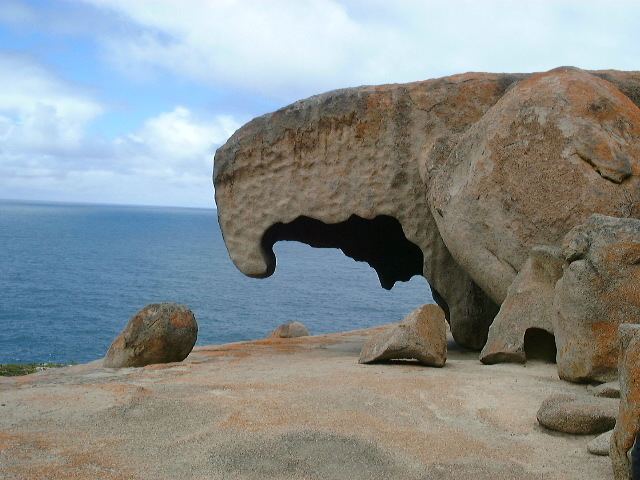Phone +61 8 8553 4450 | Area 326.6 km² Established 1919 | |
 | ||
Managing authorities Address South Coast Rd, Flinders Chase SA 5223, Australia Hours Closed now Adelaide Cup Day might affect these hoursMonday(Adelaide Cup Day)9AM–5PMHours might differTuesday9AM–5PMWednesday9AM–5PMThursday9AM–5PMFriday9AM–5PMSaturday9AM–5PMSunday9AM–5PM Similar Western KI Caravan Park, Southern Ocean Lodge, Kangaroo Island Wilderne, Cape Du Couedic Lightstati, Rocky River Heritage | ||
Flinders chase national park
Flinders Chase National Park is a protected area in the Australian state of South Australia located at the west end of Kangaroo Island about 177 kilometres (110 mi) west-south west of the state capital of Adelaide and 110 kilometres (68 mi) west of the municipal seat of Kingscote. It is a sanctuary for endangered species and home to a few geological phenomena. It was the second national park to be declared in South Australia. It consists of three sections - an area of coastal landscapes around Cape du Couedic in the south west corner of the island, the Gosse Lands in the centre of the west end of the island and the former Cape Borda Lightstation reserve in the north west corner of the island.
Contents
- Flinders chase national park
- Kangaroo island seal bay flinders chase national park south australia
- Location
- Extent
- Protected area designation
- Sanctuary
- Little penguins
- Geological monuments
- Fire
- References
Kangaroo island seal bay flinders chase national park south australia
Location
Flinders Chase National Park is located at the north-western end of Kangaroo Island in South Australia approximately 110 kilometres (68 mi) west of Kingscote. It is located within the gazetted localities of Flinders Chase, Gosse and Karatta.
Extent
As of 1993, the park consists of three separate parcels of land:
Rocky River (Kangaroo Island) is located within Flinders Chase National Park.
Protected area designation
The national park is classified as an IUCN category II protected area.
Sanctuary
Since the creation of the national park in November 1919, Flinders Chase has become a sanctuary for endangered species, some of them introduced from the mainland in the 1920s and 1930s. During the 1940s, 23 additional species were introduced, including Koalas (1923) and Platypus (1928). Most of these species can still be observed today. Kangaroos, Goannas and Echidnas are commonly seen in the park.
Little penguins
Little penguins have been recorded in Flinders Chase in the 1920s, 1930s, 1940s and 1950s. It is believed that this colonies have since gone extinct, in part of the due to the increase of New Zealand fur seal populations since the end of commercial sealing. In 1886, little penguins were seen at Admiral's Arch.
Geological monuments
The national park contains two geological features that have been listed as geological monuments by the Geological Society of Australia - Cape du Couedic and Remarkable Rocks.
Remarkable Rocks are naturally sculptured formations precariously balanced atop a granite outcrop. They remind visitors of the sculptures of Henry Moore.
Fire
Lightning strikes on Thursday 6 December 2007 caused 63,433 hectares of Flinders Chase National Park to be burnt, before finally being contained on 16 December.
